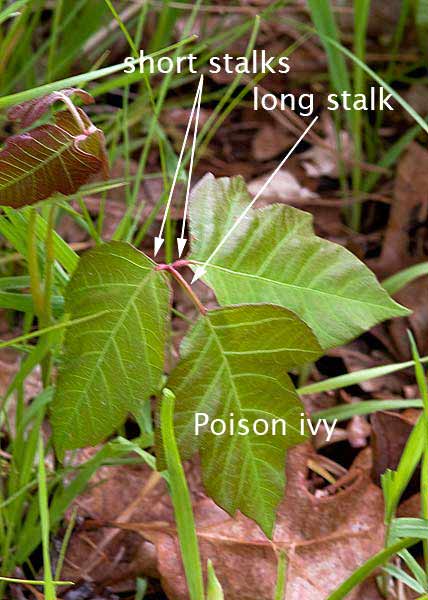

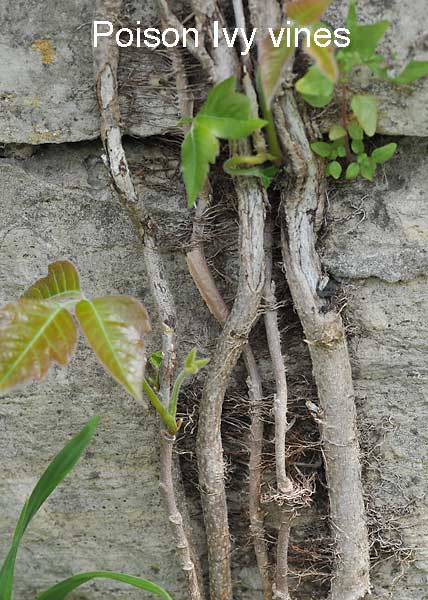
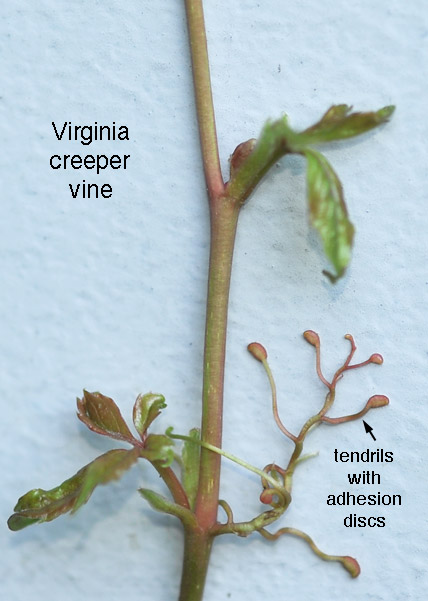
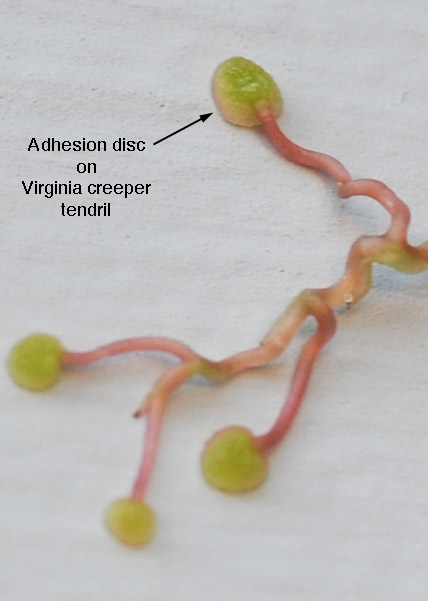
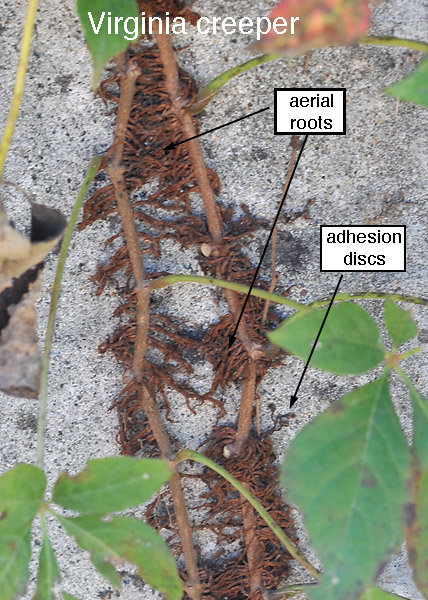
The poison ivy compound leaf consists of three leaflets. The center leaflet is long stalked compared to the two (short-stalked) lateral leaflets. In other words, there are three leaflets of which two are short stalked and one is long stalked. This type of leaf is called trifoliolate and pinnate. Virginia creeper has five leaflets each radiating from a central point on similar sized stalks. Even when two leaflets are missing, the similar sized stalks (called petiolules) distinguishes the plant from poison ivy. The leaf type on the Virginia creeper is called compound palmate. Quite often you find poison ivy and virginia creeper growing closely together with their leaves interspersed.
Poison ivy forms numerous aerial roots to attach to a tree causing the stems to look furry or hairy. Virginia creeper sends out tendrils from nodes along the stem to attach to the support. The ends of the tendrils form small discs which are visible when attached to smooth surfaces. On older stems virginia creeper will also produce aerial roots similar to those of poison ivy but thicker and less likely to be called furry.
Other plants that are mistaken for poison ivy include Boxelder (Acer negundo) saplings which sometime show three leaflets; however, the leaves are oposite on their stems. Poison ivy leaves (or nodes) are positioned alternately. Rasberry/Blackberry brambles have three leaflets also, but they usually have thorns on their stems and they don't attach to trees like vines do. Strawberry plants can also be mistaken for poison ivy. There are also other look-a-likes but the aforementioned are among the most common misidentifications.
Additional sites: Poison ivy Info, Leaf Structure, Glossary of Botanical Terms.





